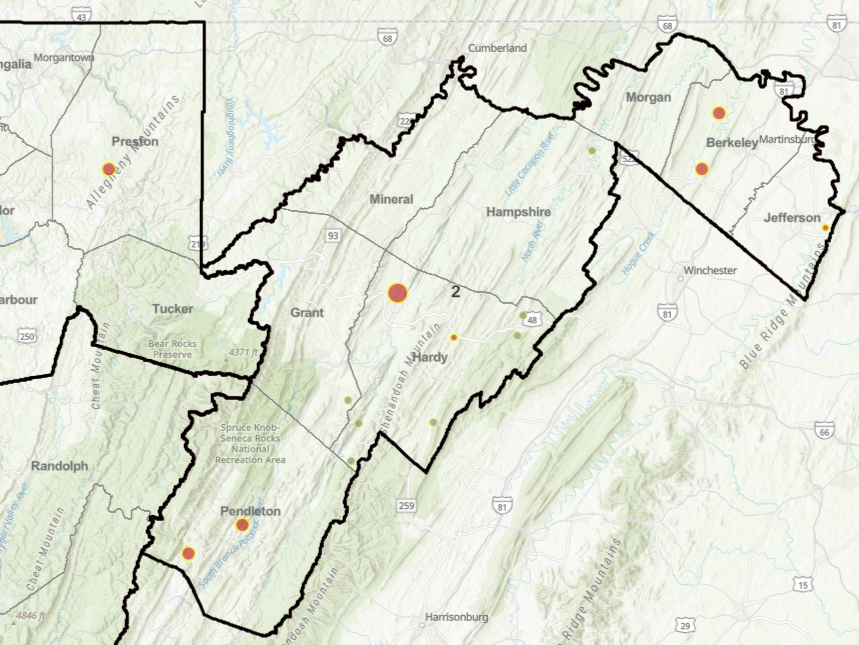Updated on Thursday, March 21, 2024 at 4:15 p.m.
Gov. Jim Justice declared a state of emergency for Grant, Hampshire, Hardy and Pendleton counties over ongoing wildfires.
According to a Thursday press release, the emergency declaration will allow for resources and emergency response efforts to more swiftly reach those affected by the fires.
In a separate Thursday statement, U.S. Rep. Alex Mooney, R-W.Va-2, said he has reached out to officials in the affected counties to provide support.
“I applaud the brave firefighters on the front lines of these fires who are doing all they can to contain the fires,” he said. “I thank the crews from across the state that have made their way to the Eastern Panhandle to assist.”
Original Post: Wildfires Blaze Thousands Of Acres In Eastern Panhandle, Potomac Highlands
After days of strong winds and low humidity, wildfires have burned across thousands of acres in eastern West Virginia this week, according to estimates from the West Virginia Division of Forestry.
Assistant State Forester Linda Carnell said that emergency personnel are working to quell the fires, which grew from separate origins but likely spread due to current weather conditions.
Carnell said the wildfires have burned most intensely in Berkeley, Hardy, Hampshire, Morgan and Pendleton counties, marking the arrival of what she described as “spring fire season.”
From March 1 to May 31 each year, the state bans most forms of outdoor fires from 7 a.m. to 5 p.m. Fluctuating temperatures, humidity and wind levels — hallmarks of spring — make it harder to control burns, and more likely that small fires will spread into something more dangerous.
Fire departments from all of the affected counties and several neighboring counties are currently in the field, working to put out the fires, Carnell said. More information on the total damage and the causes of the wildfires will surface once their work is complete.
So far, the fires have caused significant structural damage, and also burned through several areas of forest land, she said. “It’s been pretty devastating just within these few days, especially once you start losing structures.”
While the exact origins of each fire are not yet known, Carnell said there are several recurring causes of wildfires during the early spring, like a burn spreading uncontrollably or a tree branch falling onto a power line.
While emergency personnel respond to the current incidents, Carnell offered a simple piece of advice to residents across the state: “Refrain from any type of burning outside till we get significant precipitation.”
For more information on wildfire incidents in West Virginia, visit the Division of Forestry’s Fire Report webpage.
